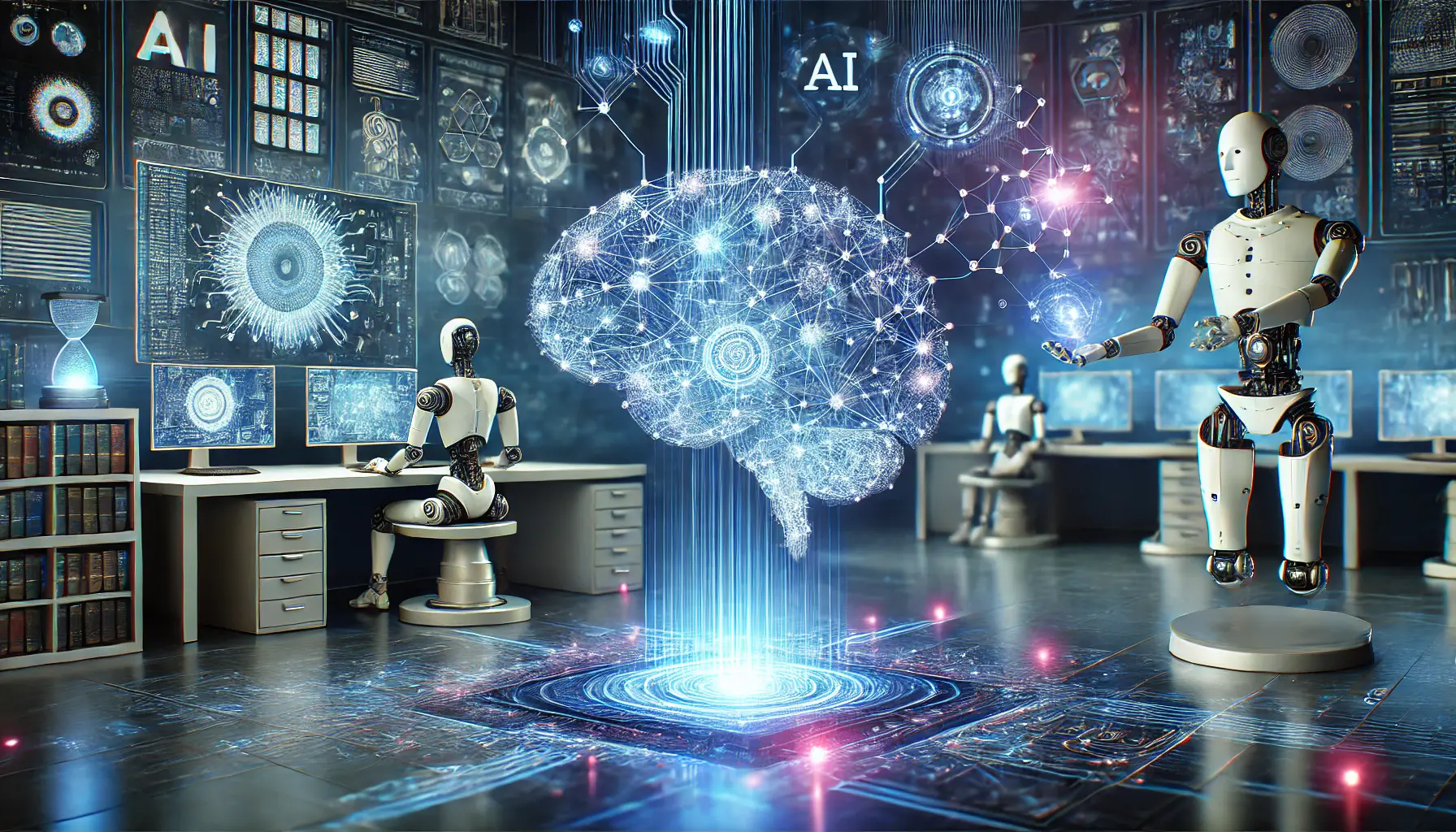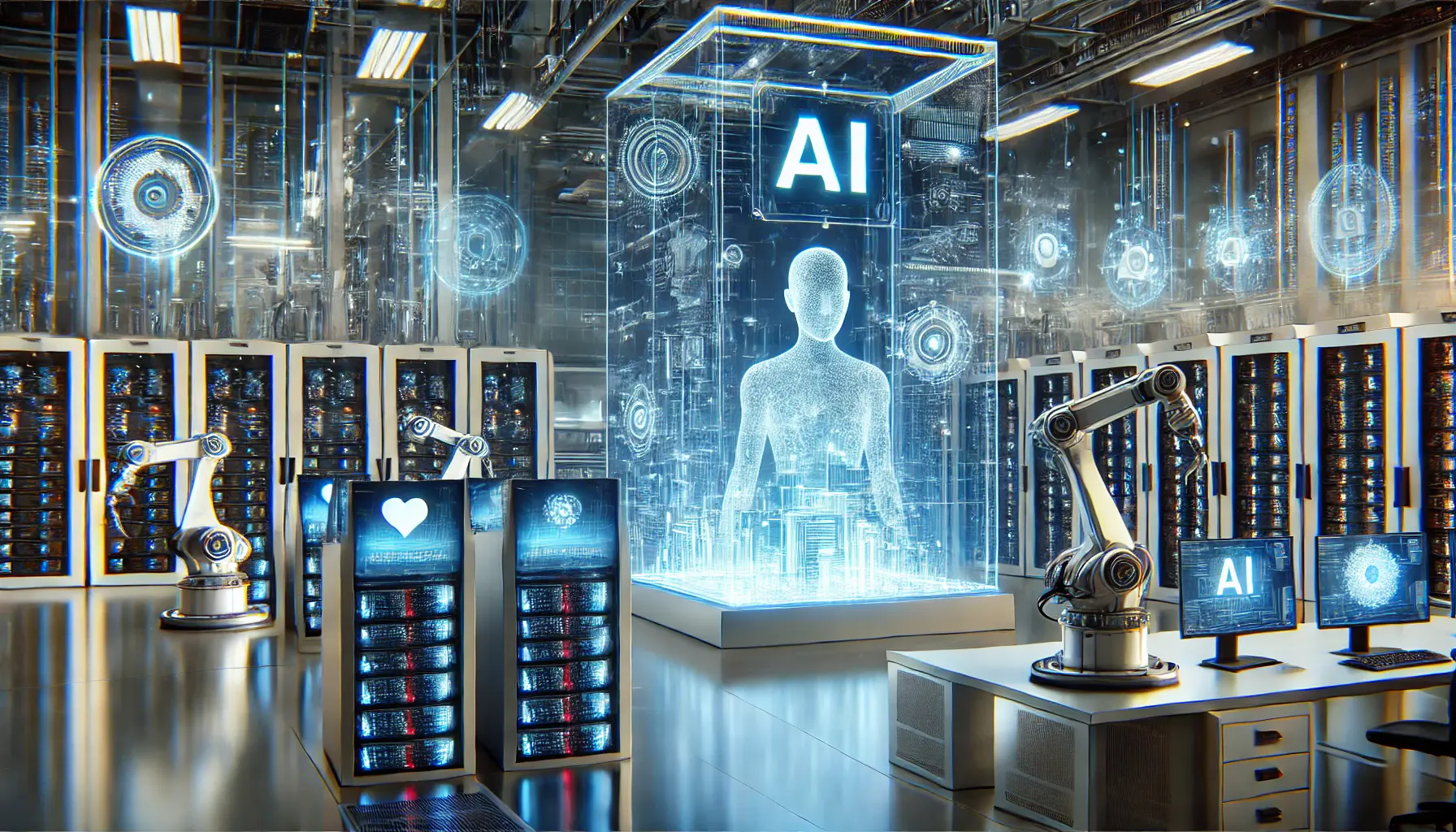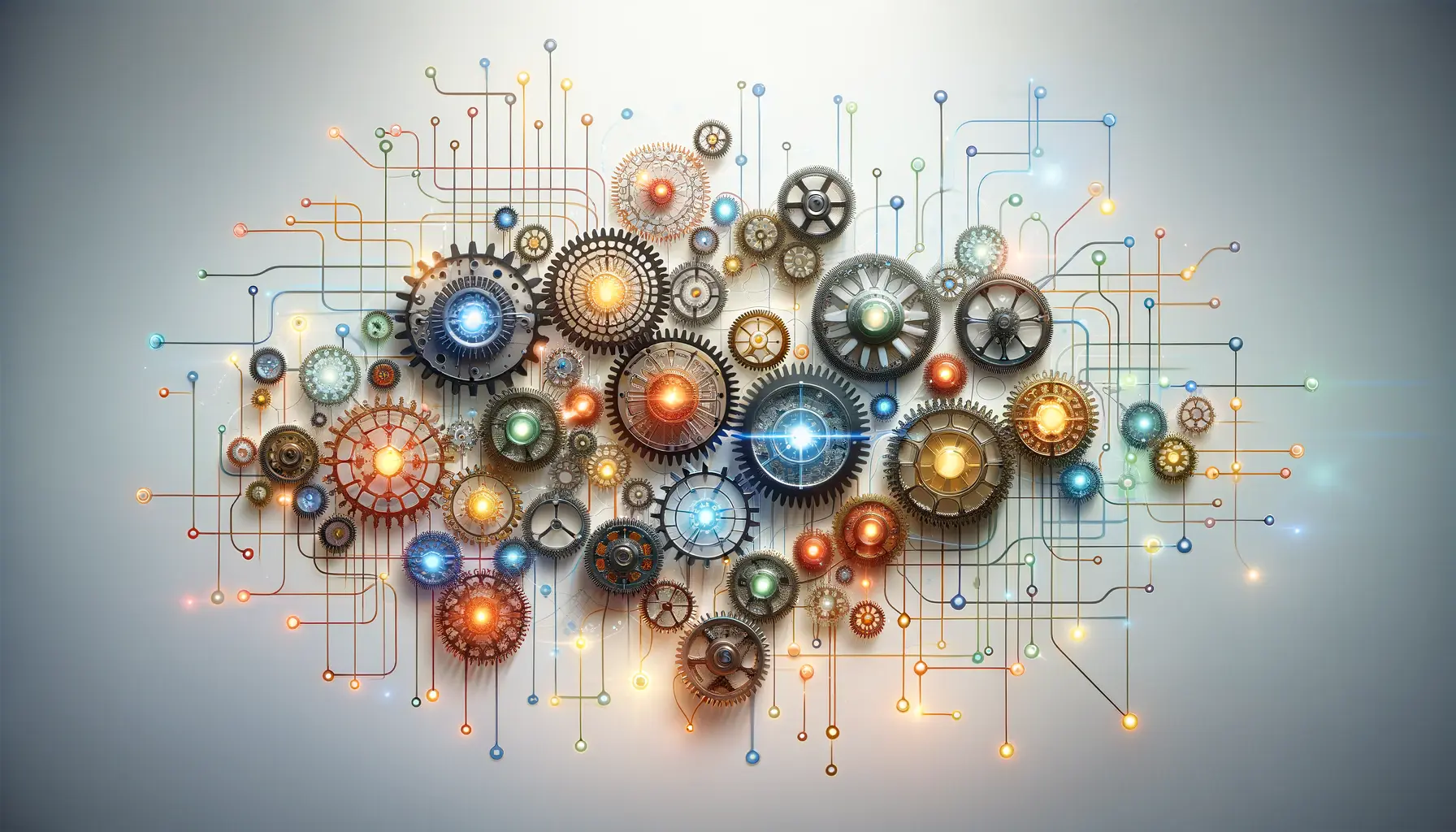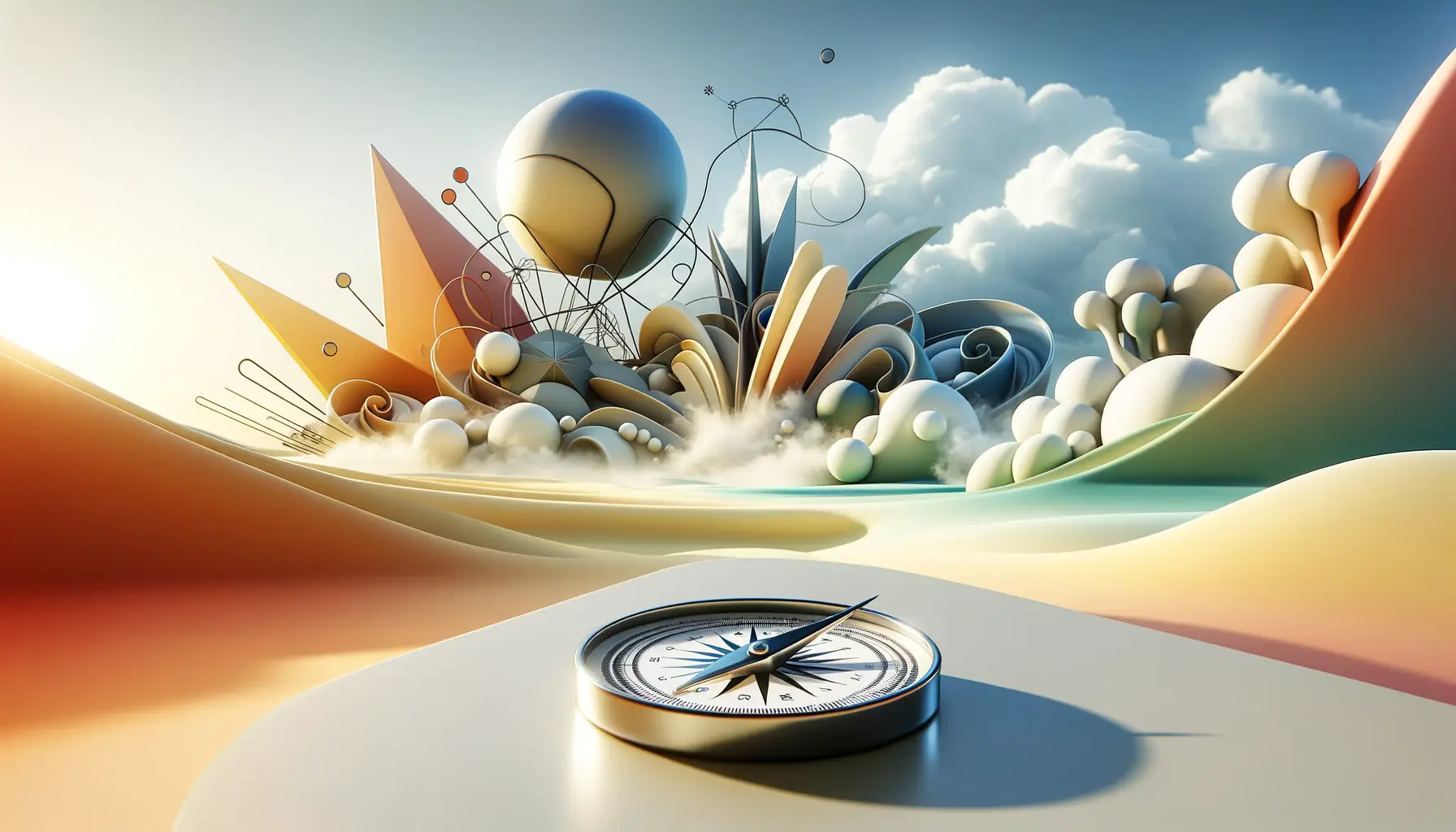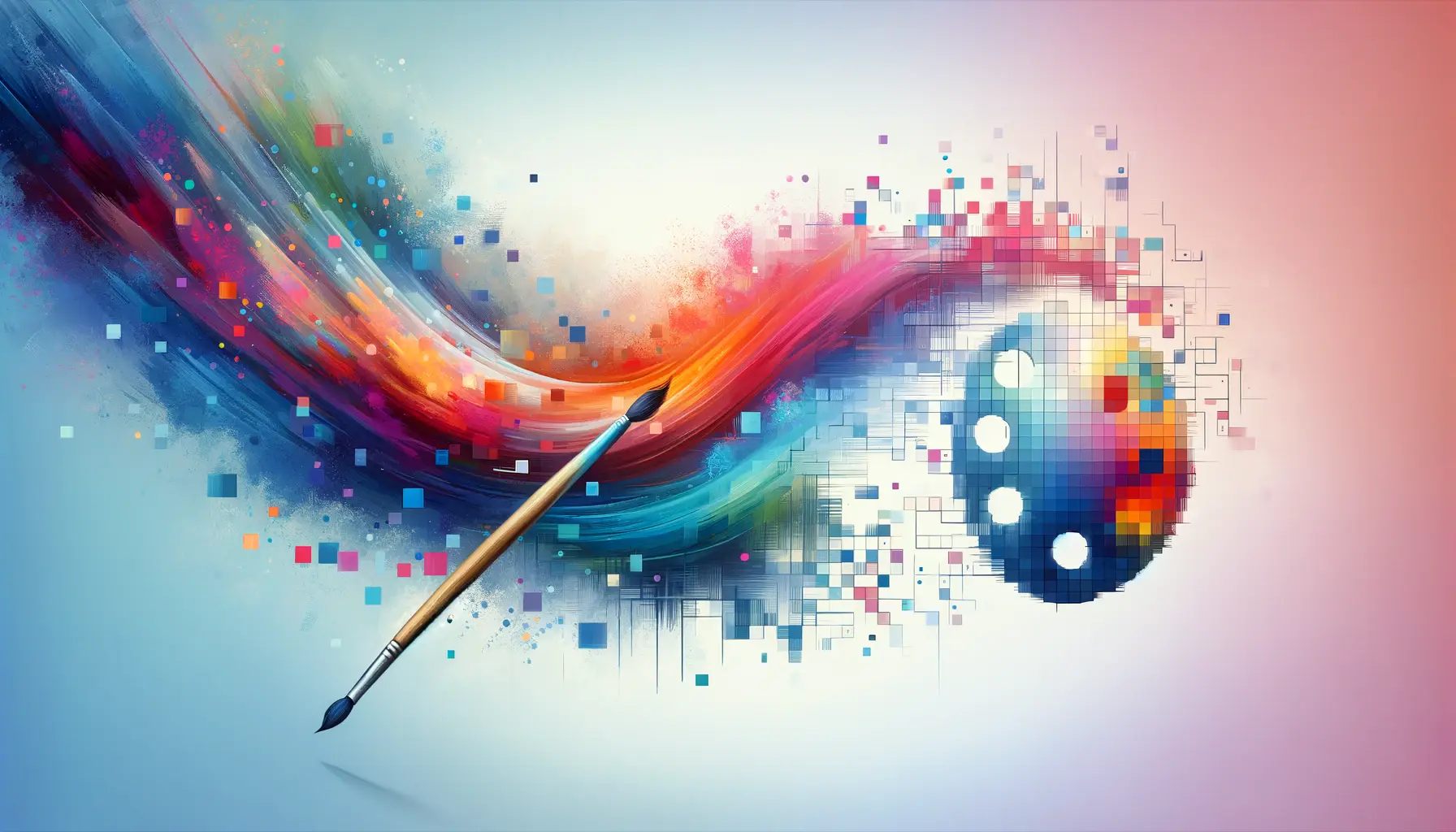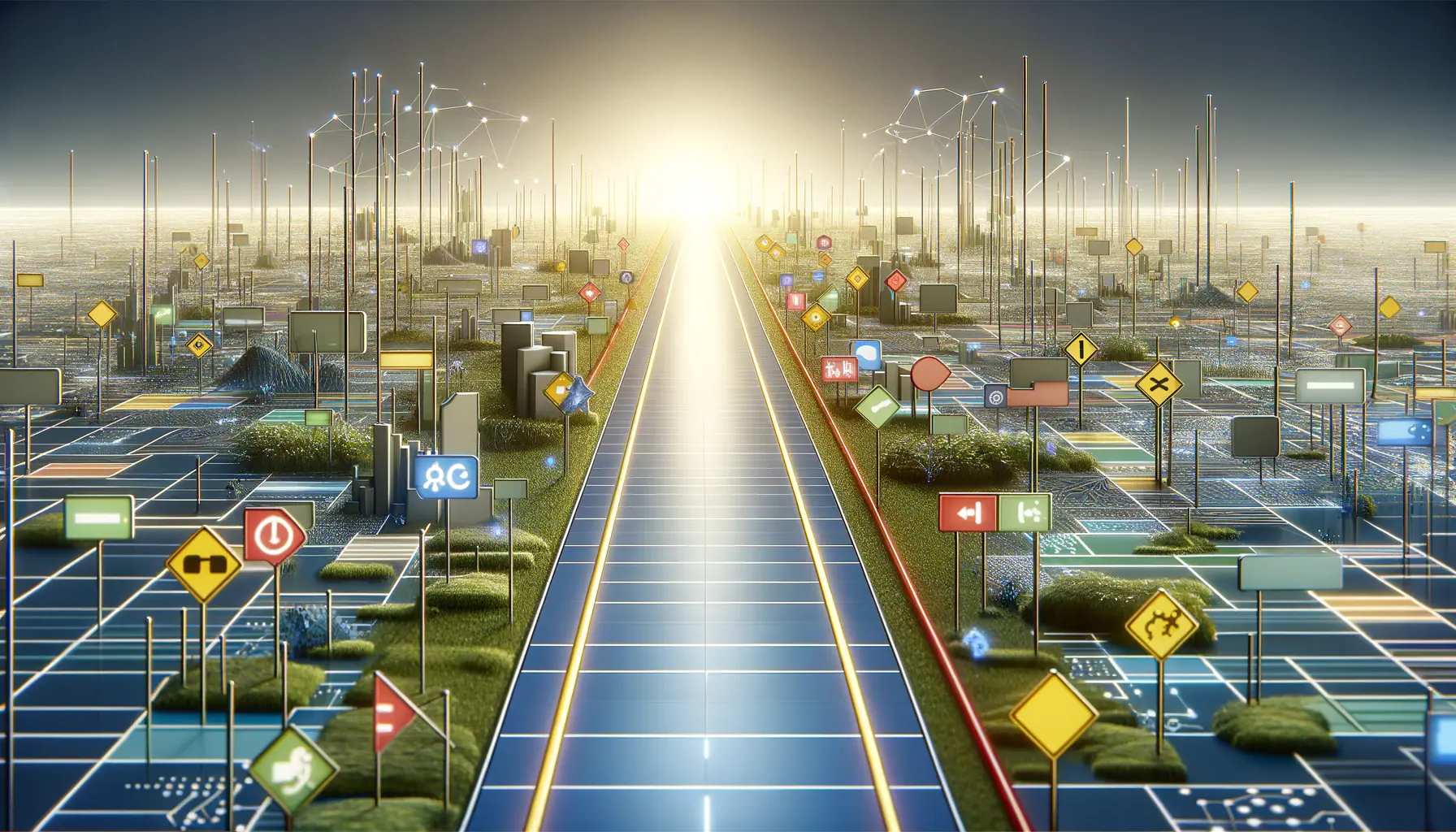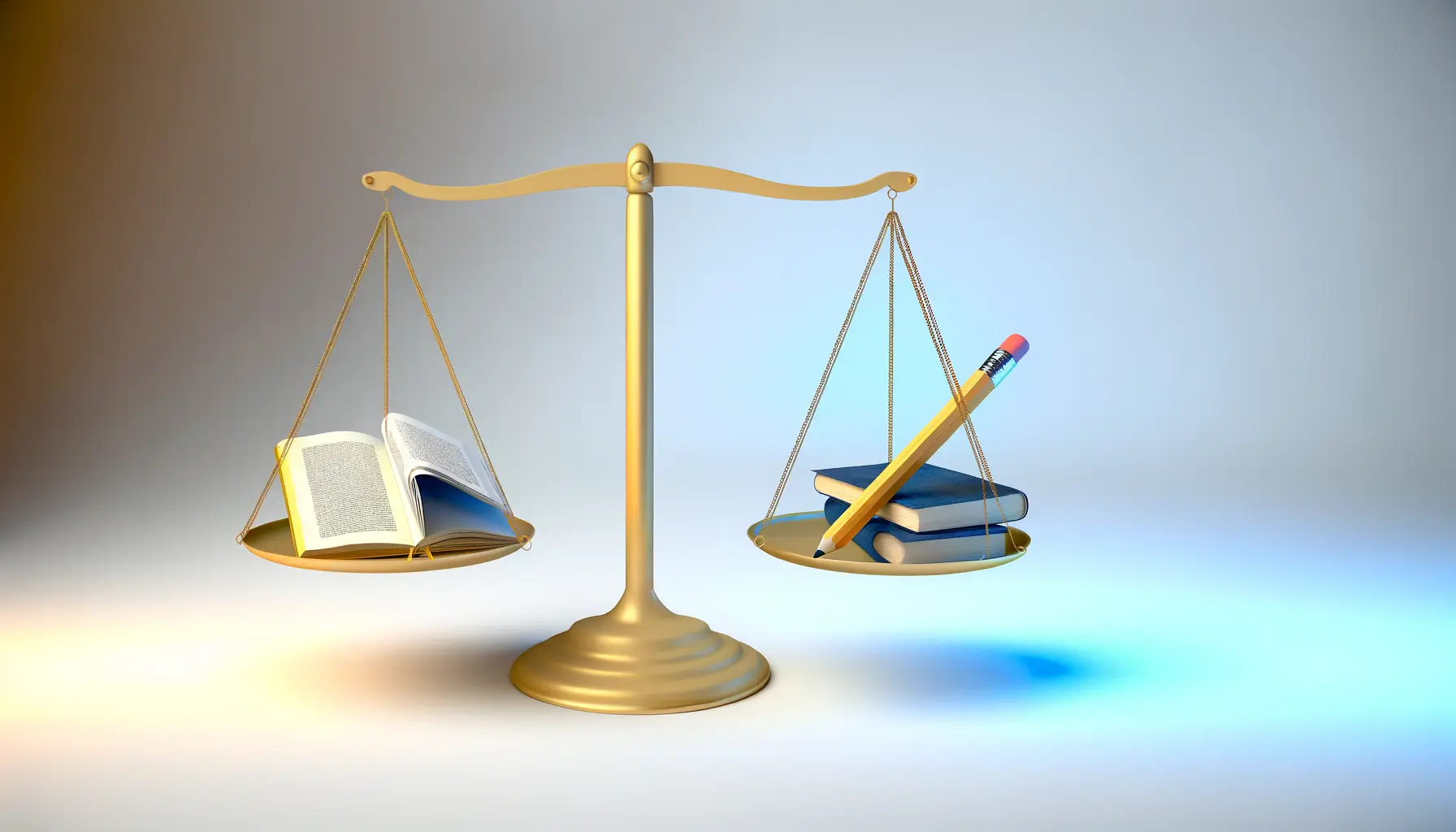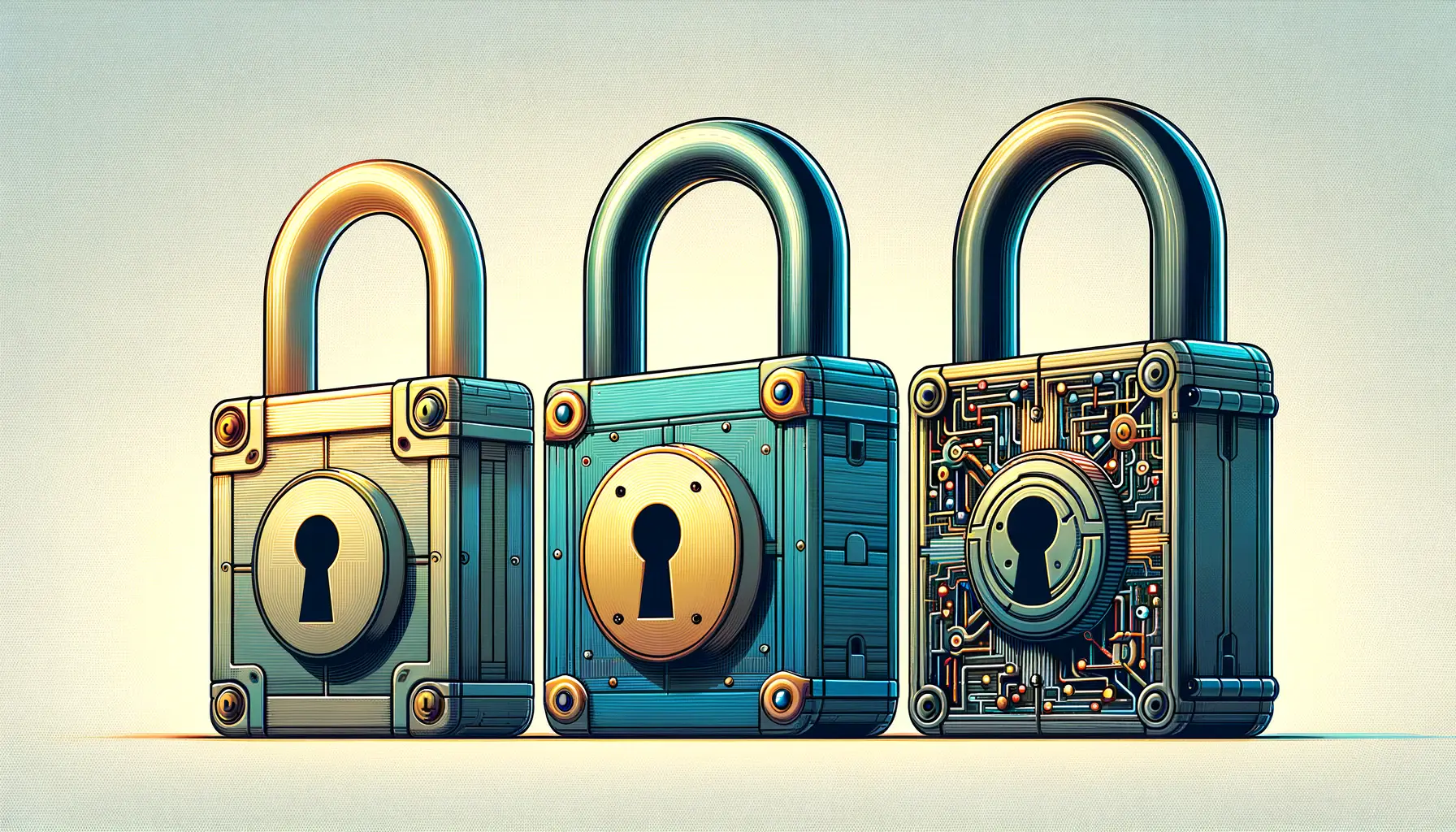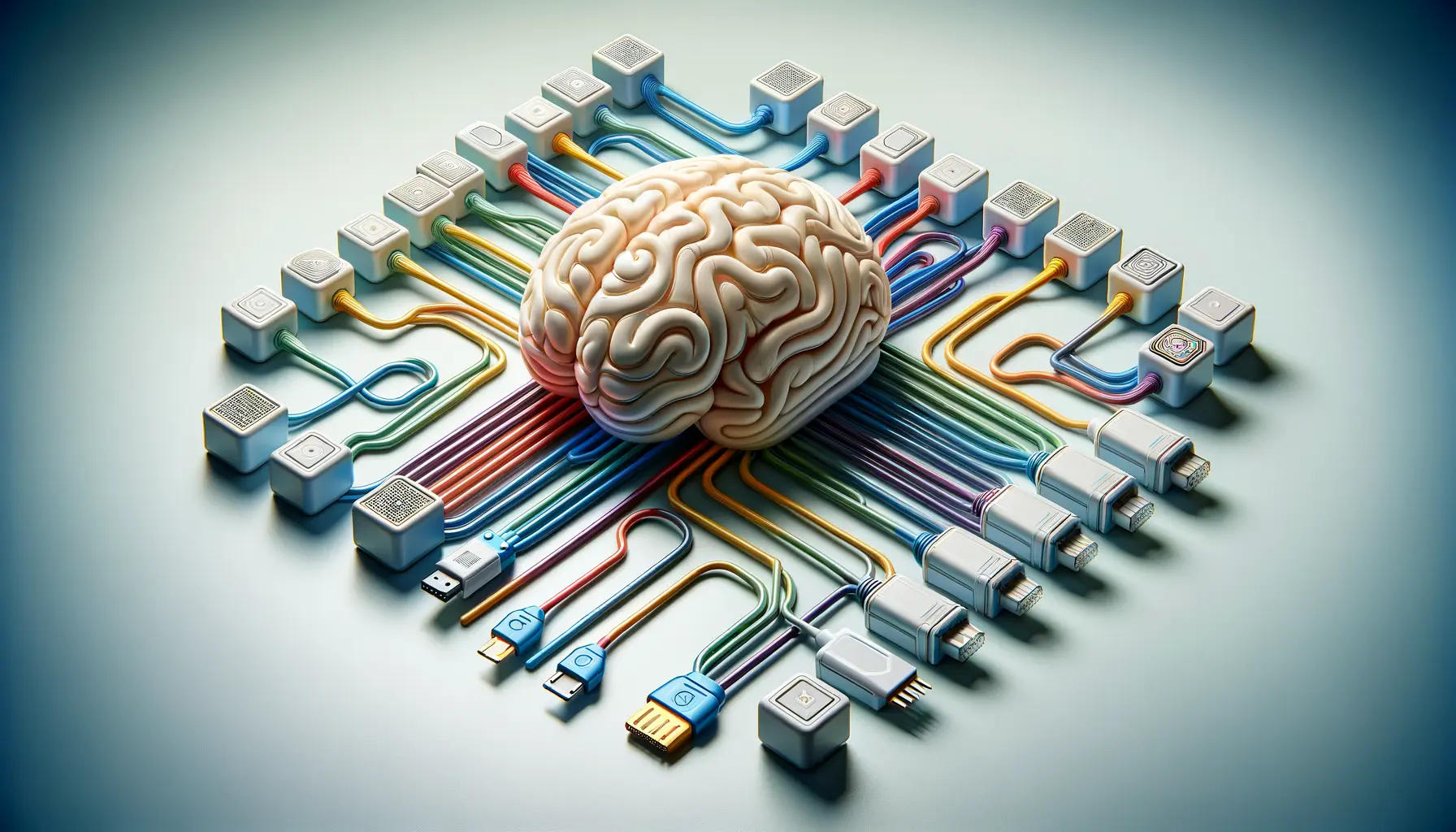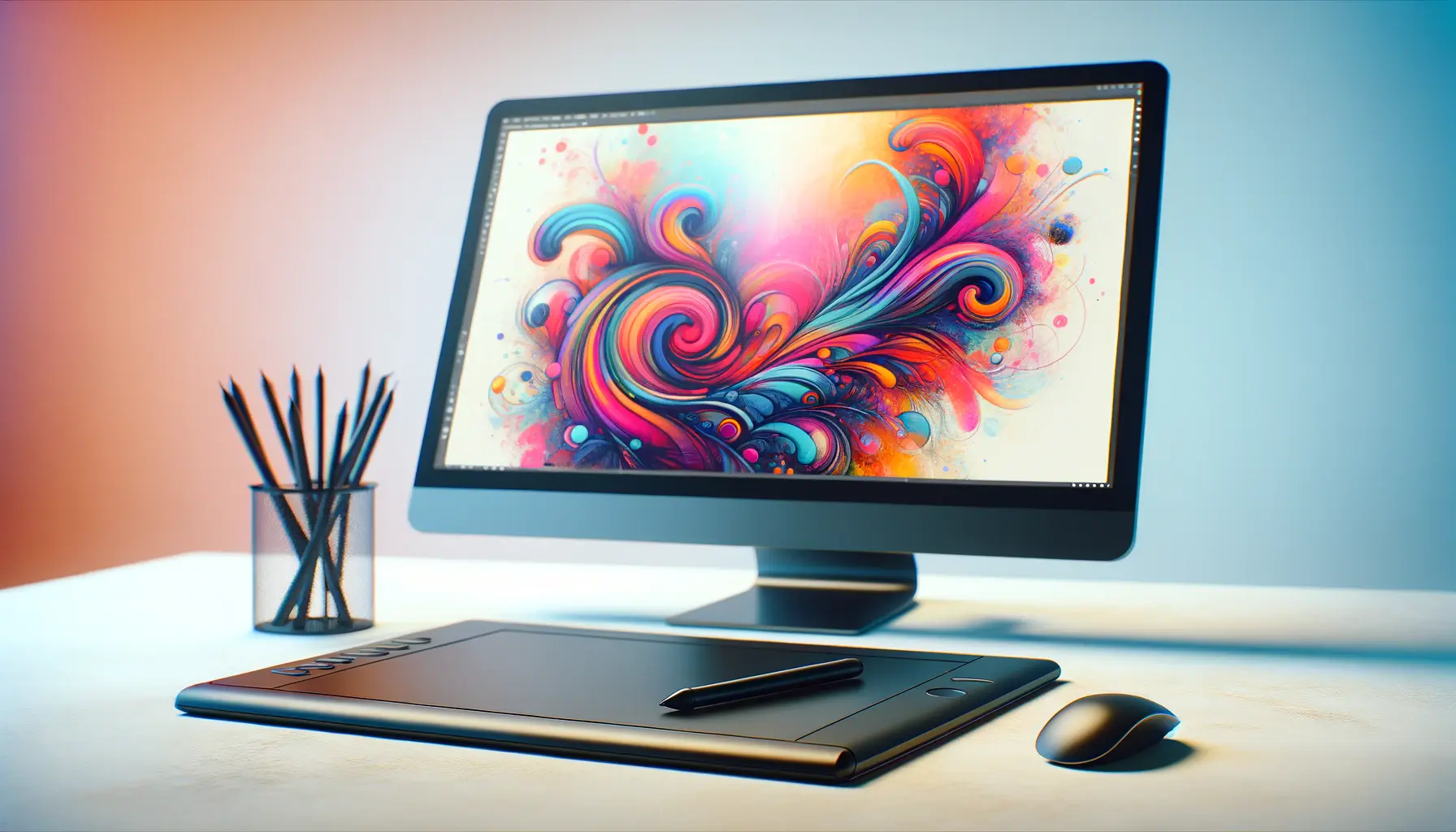In the evolving landscape of digital art and creativity, the advent of AI-driven tools like DALL-E has opened new horizons for artists, designers, and content creators.
This groundbreaking technology, developed by OpenAI, has not only democratized art creation but also presented unique challenges and opportunities in the realm of generative art.
As we delve into the intricacies of leveraging DALL-E for artistic expression, it becomes imperative to understand both its potential and the hurdles it poses, especially when it comes to overcoming creative blocks.
The integration of artificial intelligence in the creative process introduces a paradigm shift in how we conceive and execute artistic projects.
DALL-E, with its ability to generate images from textual descriptions, offers a tool of unprecedented power and flexibility.
However, this innovation is not without its challenges.
Artists and creators often find themselves at a crossroads, navigating the balance between technological assistance and the essence of human creativity.
This article aims to explore the multifaceted aspects of working with DALL-E, focusing on overcoming the creative blocks that many encounter in this new digital frontier.
- Understanding DALL-E and Its Capabilities
- Strategies for Maximizing Creativity with DALL-E
- Exploring the Ethical Implications of AI in Art
- Integrating DALL-E into Traditional Art Processes
- Future Trends in AI-Driven Art Creation
- Challenges and Solutions in AI Art
- Practical Tips for Artists Using DALL-E
- Embracing the Future of Creativity with DALL-E
- DALL-E FAQ: Overcoming Creative Blocks
Understanding DALL-E and Its Capabilities
What is DALL-E?
DALL-E, a portmanteau of “Dali” and “WALL-E,” represents a significant leap in AI technology, enabling the creation of complex images from simple text prompts.
This tool harnesses the power of generative adversarial networks (GANs) to produce visuals that range from realistic to surreal, offering artists a new medium to explore their creativity.
The ability of DALL-E to interpret and visualize concepts presents a novel approach to art creation, where the boundaries are limited only by the imagination of the user.
The implications of DALL-E’s capabilities extend beyond mere novelty.
For artists struggling with creative blocks, DALL-E serves as a muse and a collaborator, offering visual suggestions that can spark inspiration or provide a new direction for a stalled project.
The technology’s capacity to generate diverse outcomes from a single prompt allows creators to explore multiple avenues and perspectives, often leading to unexpected and innovative solutions.
Overcoming Creative Blocks with DALL-E
One of the most significant advantages of DALL-E is its role in overcoming creative blocks.
Artists, at times, find themselves facing the daunting blank canvas, unable to progress due to a lack of inspiration or direction.
DALL-E, with its endless possibilities, can serve as a catalyst for creativity, providing a starting point that can be refined and expanded upon.
By inputting descriptive prompts, creators can receive visual ideas that might never have occurred to them, breaking through the barriers of traditional creative processes.
Moreover, DALL-E’s utility in overcoming creative blocks is not just about generating art pieces but also about facilitating a deeper understanding of one’s creative vision.
The interaction with AI can help artists identify the elements they are drawn to, refine their aesthetic preferences, and discover new themes and motifs to explore in their work.
This collaborative process between human and machine opens up a dialogue that can lead to profound insights and breakthroughs in creative projects.
Exploring the potential of DALL-E not only as a tool for creating art but also as a partner in the creative process offers a new perspective on overcoming creative blocks and expanding the horizons of digital art.
Strategies for Maximizing Creativity with DALL-E
Effective Prompt Engineering
One of the keys to unlocking DALL-E’s full potential lies in the art of prompt engineering.
Crafting precise and imaginative prompts can significantly influence the quality and relevance of the generated images.
Here are some strategies for effective prompt engineering:
- Be Specific: Detailed descriptions yield more accurate and tailored results. Include specifics about style, mood, colors, and setting to guide DALL-E towards your envisioned outcome.
- Experiment with Variations: Try different phrasings and perspectives for the same concept to explore a range of visual interpretations.
- Incorporate Artistic References: Mentioning well-known artists, art movements, or specific artworks can steer DALL-E towards generating images in a similar vein.
Leveraging Iterative Design
Iterative design with DALL-E involves a cyclical process of generating images, evaluating them, and refining prompts based on feedback.
This approach encourages experimentation and can lead to innovative artistic solutions.
Steps include:
- Generate initial images based on your first set of prompts.
- Analyze the outcomes for elements that resonate with your creative vision.
- Refine your prompts to enhance or alter the generated images, focusing on areas for improvement.
- Repeat the process until the results align closely with your artistic goals.
Collaboration between Human and AI
Viewing DALL-E as a collaborative partner rather than just a tool can enrich the creative process.
This perspective fosters a symbiotic relationship where human creativity and AI’s computational power amplify each other.
To cultivate this collaboration:
- Use DALL-E to Spark Ideas: Allow the unexpected and diverse outputs of DALL-E to inspire new directions in your work.
- Combine Multiple Outputs: Merge elements from various DALL-E generated images to compose complex and nuanced artworks.
- Iterate on AI Suggestions: Use DALL-E’s outputs as a foundation for further artistic exploration, adding personal touches or combining with traditional techniques.
Embracing DALL-E as an integral part of the creative workflow can transform creative blocks into opportunities for innovation and discovery.
Exploring the Ethical Implications of AI in Art
The integration of AI technologies like DALL-E into the creative process is not without its ethical considerations.
As we navigate this new terrain, it’s crucial to address the implications of AI-generated art on copyright, originality, and the value of human creativity.
This section delves into the ethical landscape surrounding AI in art, offering insights into how artists and the broader community can approach these challenges responsibly.
Copyright and Originality Concerns
One of the most pressing ethical issues in the realm of AI-generated art involves copyright and originality.
DALL-E’s ability to produce images based on a vast database of existing artworks raises questions about the ownership of these creations and the originality of AI-generated content.
To navigate these concerns:
- Artists should be transparent about the use of AI in their creative process, distinguishing between human-made and AI-assisted works.
- It’s important to consider the legal implications of using AI-generated images that may resemble copyrighted works, ensuring compliance with copyright laws.
The Value of Human Creativity
Another ethical consideration is the impact of AI on the perceived value of human creativity.
As AI technologies become more capable of producing art, there’s a risk that the unique qualities of human-made art could be undervalued.
To preserve the importance of human creativity:
- Encourage a culture that recognizes and appreciates the irreplaceable depth and emotional resonance of art created by humans.
- Support initiatives that highlight the collaborative potential between artists and AI, rather than positioning AI as a replacement for human creativity.
Addressing Bias in AI-Generated Art
AI systems, including DALL-E, learn from datasets that may contain biases, which can be reflected in the generated art.
Addressing these biases is essential for ensuring that AI-generated art is inclusive and representative.
Strategies include:
- Auditing and curating training datasets to minimize biases and promote diversity in AI-generated content.
- Developing guidelines for ethical AI use in art, emphasizing fairness, inclusivity, and respect for cultural differences.
Ethical considerations in AI-generated art underscore the need for a balanced approach that respects copyright, values human creativity, and addresses biases, ensuring that AI serves as a tool for enhancing artistic expression rather than diminishing it.
Integrating DALL-E into Traditional Art Processes
The advent of AI tools like DALL-E offers unprecedented opportunities for artists to blend traditional art processes with cutting-edge technology.
This fusion not only enriches the artistic palette but also opens up new avenues for creativity and expression.
By integrating DALL-E into traditional art processes, artists can push the boundaries of what’s possible, creating works that are both innovative and deeply rooted in artistic tradition.
Incorporating AI into Conceptualization
The initial stage of any art project involves conceptualization, where ideas are born and directions are set.
DALL-E can play a crucial role at this stage by providing visual inspirations and interpretations of abstract concepts.
Artists can input thematic or stylistic prompts into DALL-E to generate a range of images that can spark new ideas or offer a visual form to elusive concepts.
This process can significantly speed up the conceptual phase, allowing artists to explore a wider array of ideas more efficiently.
Enhancing Composition with AI
Composition is a fundamental aspect of art that determines how elements are arranged within a work.
DALL-E can assist artists in experimenting with different compositional structures by generating variations of a proposed layout or theme.
Artists can use these AI-generated compositions as a reference or starting point, combining them with traditional techniques to create complex and harmonious arrangements.
This approach not only saves time but also introduces artists to compositional possibilities they might not have considered.
Refining Artistic Techniques
Traditional art techniques, whether in painting, drawing, or sculpture, require years of practice and refinement.
DALL-E can contribute to this process by offering visual examples of specific techniques or styles based on descriptive prompts.
For instance, an artist looking to explore impressionist techniques can generate images in this style for study and inspiration.
This direct access to a vast array of stylistic representations can accelerate the learning curve and enhance the artist’s technical repertoire.
Fusing AI with Physical Art Making
The final creation of art often involves physical media, such as canvas, paper, or sculptural materials.
DALL-E-generated images can serve as blueprints or guides for physical artworks, where the AI’s output is translated into tangible forms through painting, drawing, or other media.
This process not only bridges the digital and physical realms but also allows for a unique synthesis of AI imagination and human craftsmanship, leading to truly original works that reflect the best of both worlds.
The integration of DALL-E into traditional art processes represents a new frontier in artistic creation, where the lines between technology and tradition blur, giving rise to a rich tapestry of possibilities that enhance both the creation and appreciation of art.
Future Trends in AI-Driven Art Creation
The intersection of artificial intelligence and art is not just a passing trend but a burgeoning field that promises to redefine the creative landscape.
As we look towards the future, several trends in AI-driven art creation stand out, signaling a shift in how art is produced, consumed, and perceived.
These trends not only highlight the growing influence of AI in the arts but also suggest new directions for artists and creators in leveraging technology to expand their creative horizons.
Personalization and Customization
One of the most significant trends in AI-driven art is the move towards greater personalization and customization.
AI tools like DALL-E are becoming increasingly adept at creating art that caters to individual preferences and specifications.
This capability allows for the creation of bespoke artworks that resonate on a personal level with viewers, offering tailored aesthetic experiences.
As AI technology continues to evolve, we can expect even more sophisticated personalization features, enabling artists to create highly customized pieces that reflect the unique tastes and interests of their audience.
Collaborative Artistic Endeavors
Another trend shaping the future of AI-driven art is the rise of collaborative projects between humans and AI.
These collaborations are breaking down the traditional barriers between creator and tool, with AI becoming an active participant in the creative process.
Artists are exploring new ways to integrate AI-generated elements into their work, resulting in hybrid creations that blend human creativity with machine intelligence.
This trend is fostering a new form of artistic expression that is collaborative, experimental, and boundary-pushing, offering fresh perspectives on the role of technology in art.
Expansion of Generative Art
Generative art, where artworks are created through algorithms and computational processes, is experiencing a renaissance thanks to advancements in AI.
Tools like DALL-E are enabling artists to explore generative art on an unprecedented scale, creating complex and intricate pieces that would be difficult, if not impossible, to achieve manually.
This trend is not only expanding the possibilities of generative art but also challenging our understanding of creativity and authorship, as the line between artist and algorithm becomes increasingly blurred.
Increased Accessibility and Democratization
AI-driven art creation is also contributing to the democratization of art, making it more accessible to a wider audience.
With tools like DALL-E, individuals without formal artistic training can create compelling artworks, lowering the barriers to entry for art creation.
This trend is opening up the art world to new voices and perspectives, enriching the cultural landscape with a diversity of expressions and ideas.
As AI art tools become more user-friendly and widely available, we can expect a surge in creative output from a broad spectrum of society, further democratizing the art world.
The future of AI-driven art creation is marked by trends that emphasize personalization, collaboration, generative processes, and democratization, heralding a new era in which technology and creativity converge to expand the boundaries of artistic expression.
Challenges and Solutions in AI Art
The integration of AI into the art world, while revolutionary, is not without its challenges.
These challenges range from technical limitations to ethical dilemmas, each impacting the way AI tools like DALL-E are used in creative processes.
However, for every challenge, there are emerging solutions and best practices that artists and developers are employing to navigate this new terrain effectively.
Technical Limitations and Overcoming Them
One of the primary challenges in AI art creation involves the technical limitations of current AI models, including issues with resolution, detail, and the ability to accurately interpret complex prompts.
To overcome these limitations, artists are:
- Employing hybrid techniques that combine AI-generated elements with manual refinements to enhance detail and fidelity.
- Using multiple AI tools in tandem to leverage the strengths of each, such as combining DALL-E’s imaginative capabilities with other software specialized in high-resolution outputs.
Navigating Ethical Considerations
Ethical considerations, particularly around copyright and the originality of AI-generated art, pose significant challenges.
Solutions being explored include:
- Developing clearer guidelines and legal frameworks to address copyright issues in AI-generated content.
- Creating attribution models that recognize both the AI tool and the human artist’s contributions to the creative process.
Addressing Bias in AI-Generated Art
Bias in AI-generated art, stemming from biased training data, is a concern that affects the diversity and inclusivity of AI art.
Efforts to address bias involve:
- Auditing and curating training datasets to ensure they are diverse and representative of a wide range of cultures and perspectives.
- Implementing algorithmic adjustments to reduce the propagation of biases in generated artworks.
Enhancing Public Perception and Acceptance
The public perception of AI-generated art varies, with some viewing it as a legitimate form of artistic expression and others as a novelty or even a threat to traditional art forms.
To enhance acceptance:
- Educational initiatives are crucial to inform the public about the creative potential of AI and its role as a tool rather than a replacement for human creativity.
- Highlighting successful collaborations between artists and AI can demonstrate the complementary nature of human and machine creativity.
While challenges in AI art creation are significant, the art community’s proactive approach in finding solutions underscores the potential for AI to coexist with traditional art forms, enriching the creative landscape rather than detracting from it.
Practical Tips for Artists Using DALL-E
As artists navigate the exciting yet complex world of AI-driven art creation with tools like DALL-E, practical strategies can help maximize the potential of these technologies.
Here are actionable tips for artists looking to integrate DALL-E into their creative workflow effectively.
Mastering Prompt Engineering
Developing skill in prompt engineering is crucial for leveraging DALL-E’s capabilities.
Artists should:
- Practice crafting detailed and specific prompts to guide DALL-E towards desired outcomes.
- Experiment with different styles, themes, and subjects to understand how DALL-E responds to various inputs.
Iterative Creation Process
Embracing an iterative approach to art creation with DALL-E can lead to more refined and compelling artworks.
This involves:
- Generating multiple versions of an artwork based on initial prompts, then tweaking those prompts based on the results.
- Using DALL-E’s outputs as a starting point for further artistic exploration and development.
Hybrid Art Techniques
Combining DALL-E-generated images with traditional art techniques can produce unique and innovative artworks.
Artists are encouraged to:
- Use DALL-E to generate concepts or elements that can be incorporated into paintings, drawings, or digital compositions.
- Experiment with blending AI-generated imagery with handcrafted art to create mixed-media pieces.
Staying Informed and Adaptable
The field of AI art is rapidly evolving, with new tools and features being developed regularly.
To stay ahead, artists should:
- Keep up with the latest developments in AI art technology and software updates.
- Be open to experimenting with new tools and techniques as they become available.
Building a Community
Engaging with other artists who are exploring AI in their work can provide valuable insights and inspiration.
Consider:
- Joining online forums, social media groups, or local meetups focused on AI art.
- Sharing experiences, successes, and challenges with the community to foster a collaborative learning environment.
By mastering prompt engineering, embracing iterative processes, experimenting with hybrid techniques, staying informed, and engaging with a community of like-minded artists, creators can fully harness the creative possibilities offered by DALL-E and other AI art tools.
Embracing the Future of Creativity with DALL-E
The journey through the realms of AI-driven art creation, particularly with DALL-E, unveils a landscape brimming with potential, challenges, and transformative opportunities for artists and creators.
As we stand on the brink of a new era in artistic expression, it’s clear that tools like DALL-E are not just technological marvels but gateways to uncharted territories of creativity.
The fusion of artificial intelligence and human ingenuity is crafting a future where the act of creation is boundless, democratized, and infused with possibilities that were once deemed unimaginable.
Reimagining Artistic Boundaries
The advent of DALL-E challenges traditional notions of art, pushing the boundaries of what can be achieved through collaboration between human minds and machine intelligence.
This partnership heralds a new age of creativity where the limitations are set not by technical constraints but by the extent of our imagination.
As artists harness DALL-E to overcome creative blocks, explore new aesthetic realms, and personalize art in unprecedented ways, we witness the dawn of a dynamic canvas that reflects the complexity and richness of human experience.
Charting the Ethical Landscape
Yet, as we navigate this promising horizon, the ethical implications of AI in art command our attention and discernment.
The dialogue around copyright, originality, and bias underscores the need for a balanced approach that honors both the technological prowess of tools like DALL-E and the irreplaceable value of human creativity.
Addressing these challenges head-on, the art community is tasked with charting a course that respects artistic integrity while embracing the innovations that AI brings to the creative table.
Cultivating a Collaborative Future
The path forward is one of collaboration, learning, and adaptation.
By mastering the nuances of prompt engineering, engaging in iterative creation processes, and blending AI-generated art with traditional techniques, artists can unlock new dimensions of creativity.
The future of art with DALL-E is not a solitary journey but a collective exploration where sharing knowledge, experiences, and visions enriches the tapestry of human expression.
- Embrace continuous learning and experimentation with DALL-E and other AI tools.
- Engage with the broader community of artists and creators to share insights and inspire innovation.
DALL-E FAQ: Overcoming Creative Blocks
Explore frequently asked questions about utilizing DALL-E to navigate and overcome creative blocks, enhancing your artistic workflow.
Yes, DALL-E can inspire new ideas by generating images from textual prompts, offering fresh perspectives and overcoming creative stagnation.
Yes, DALL-E can be used for commercial purposes, including freelancing and creating NFTs, with adherence to OpenAI’s content policy.
DALL-E aids creativity by providing visual outputs based on descriptive prompts, helping artists visualize concepts and break through blocks.
Yes, artworks created with DALL-E during its research preview can be sold, subject to OpenAI’s guidelines and copyright considerations.
Best practices include refining prompts for specificity, experimenting with styles, and combining AI-generated elements with traditional techniques.
Access to DALL-E 2 is granted through OpenAI’s platform, with options for direct application or joining a waitlist for availability.
No, DALL-E democratizes art creation, allowing individuals without formal artistic training to generate compelling visual content.
DALL-E enriches traditional art by offering new tools for inspiration and creation, blending AI innovation with classic artistic expression.

